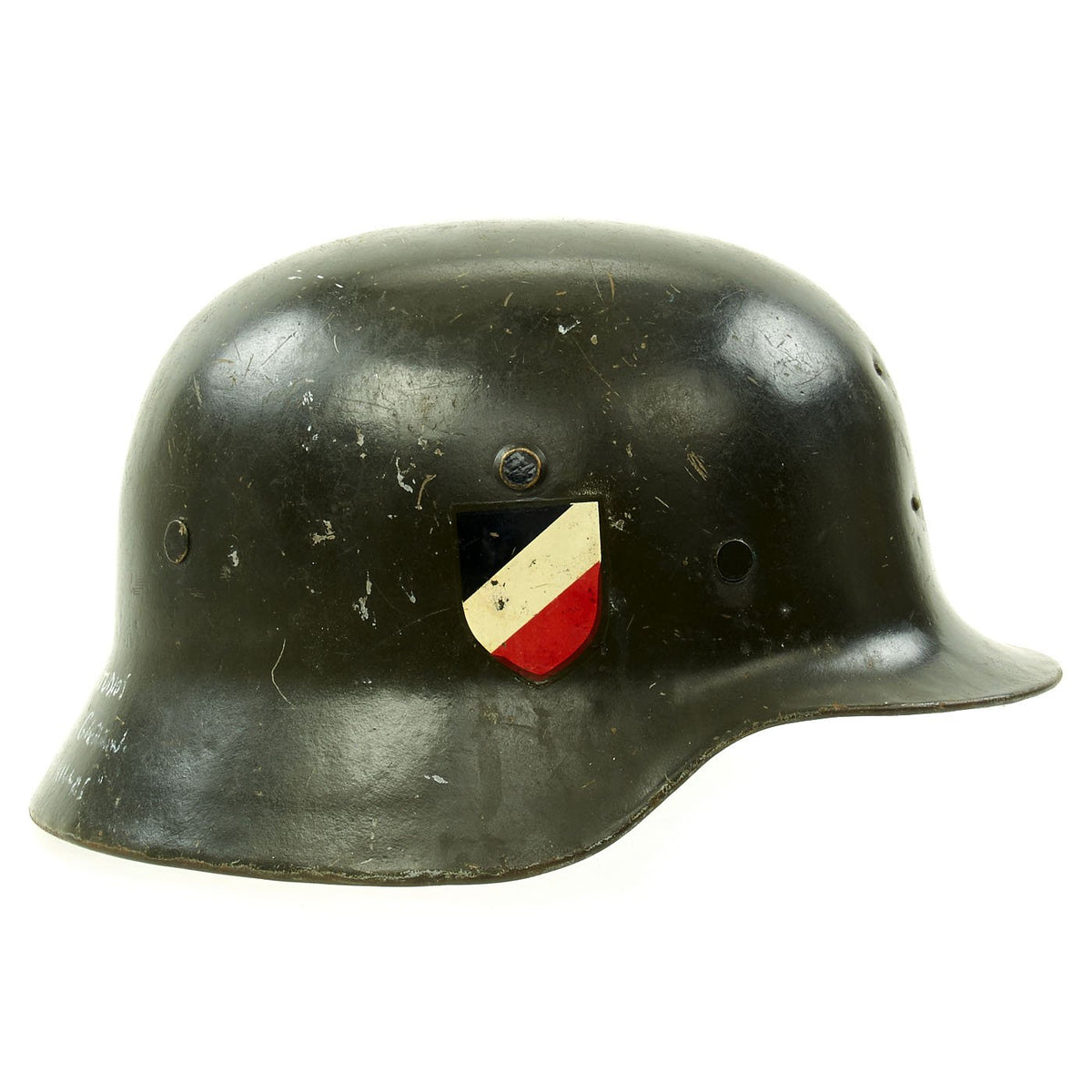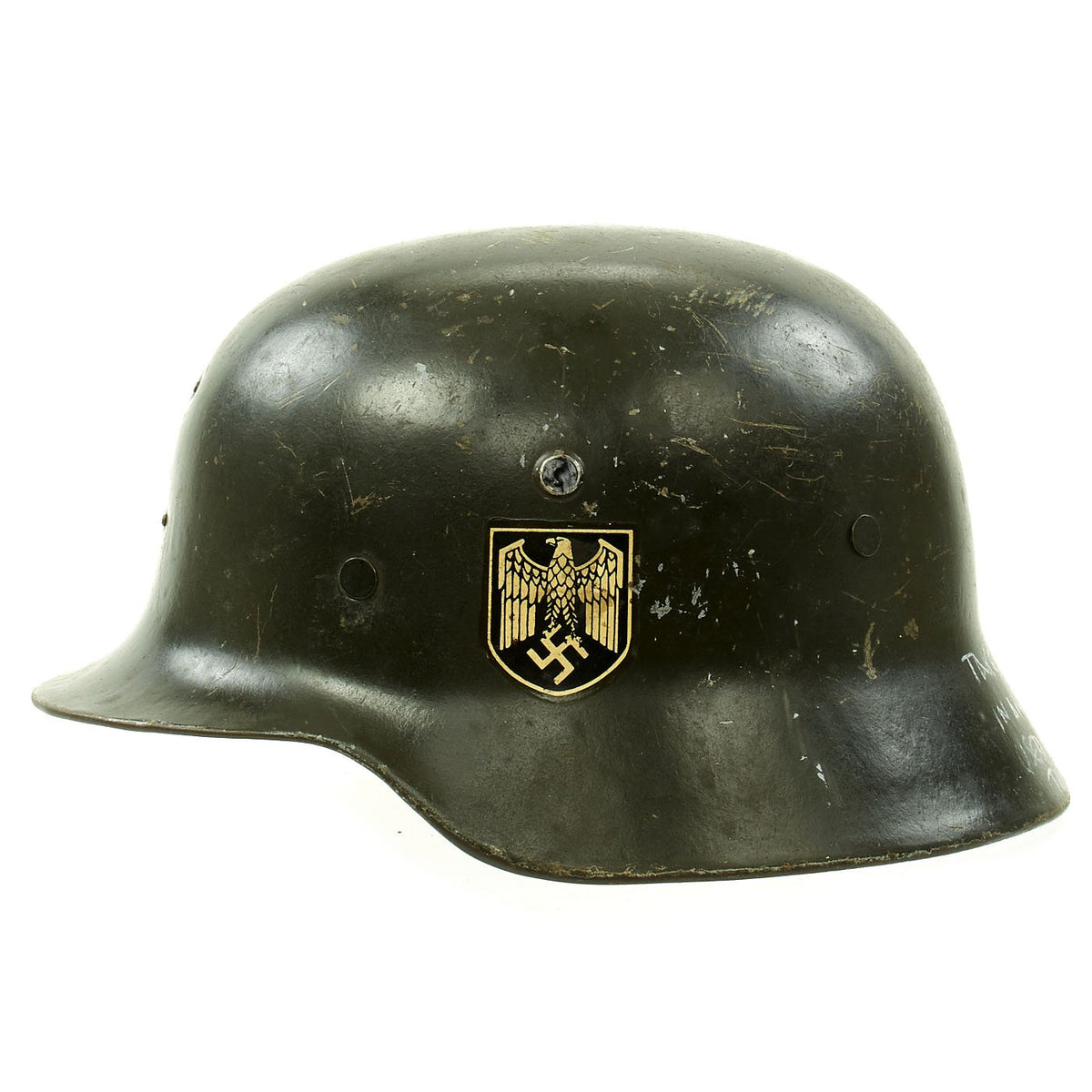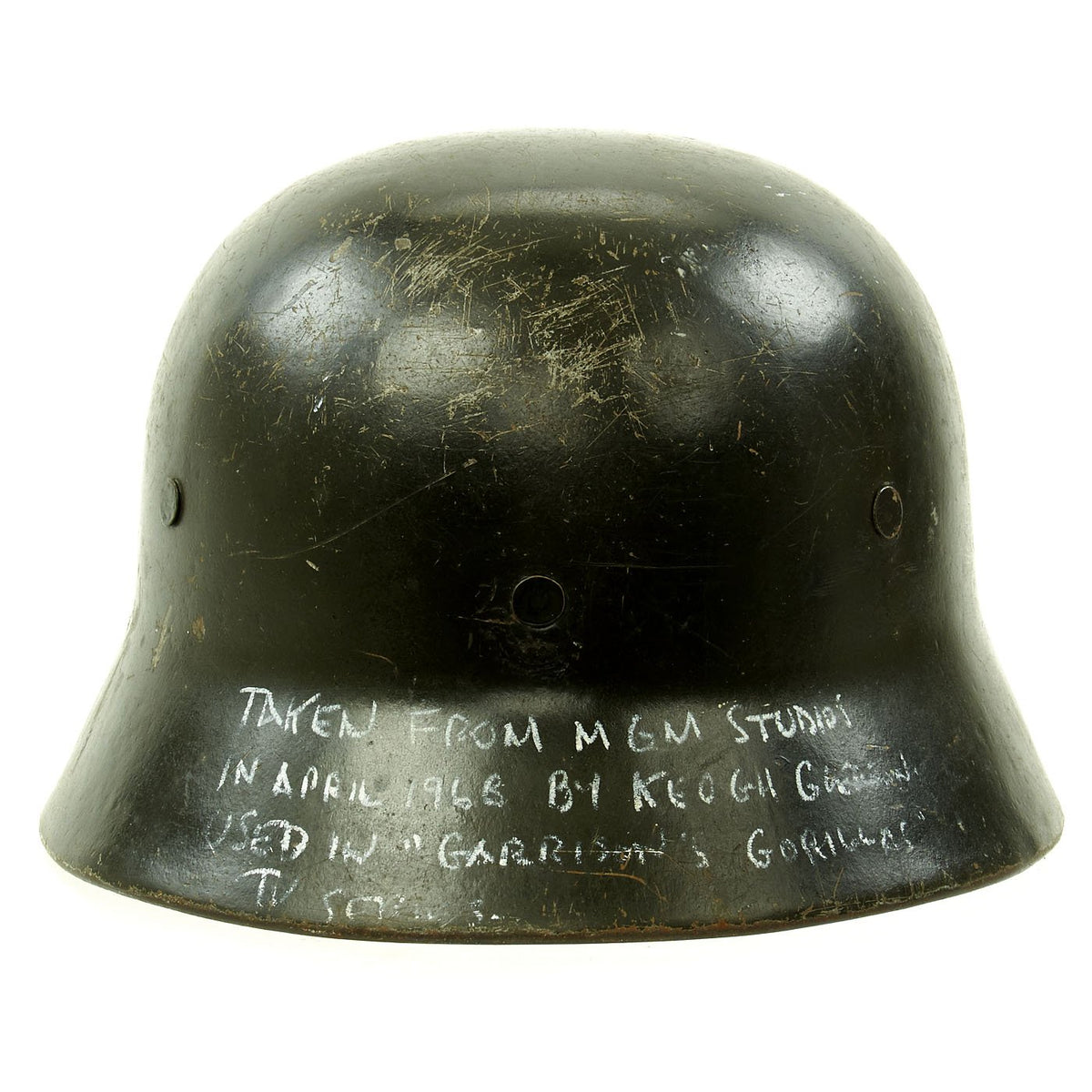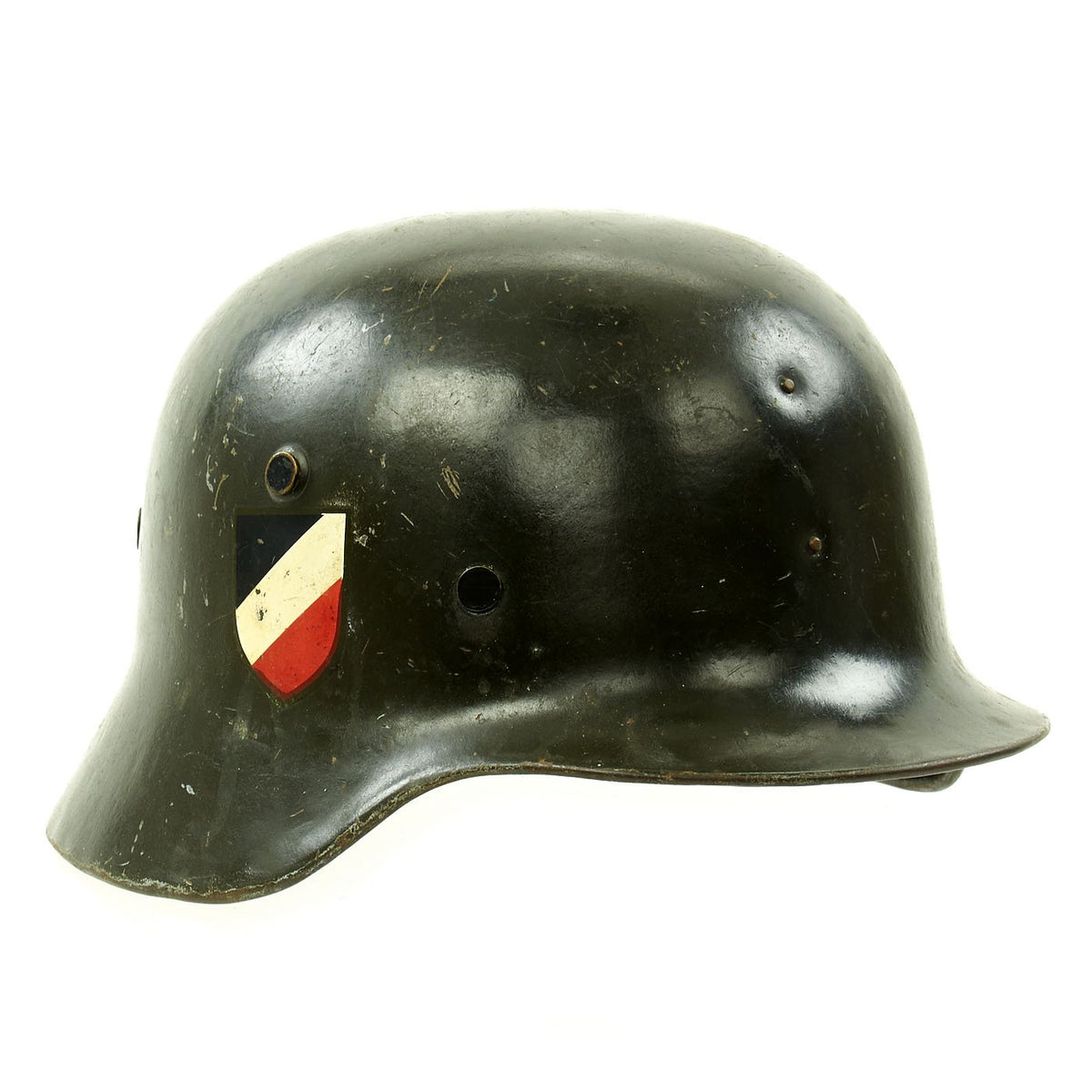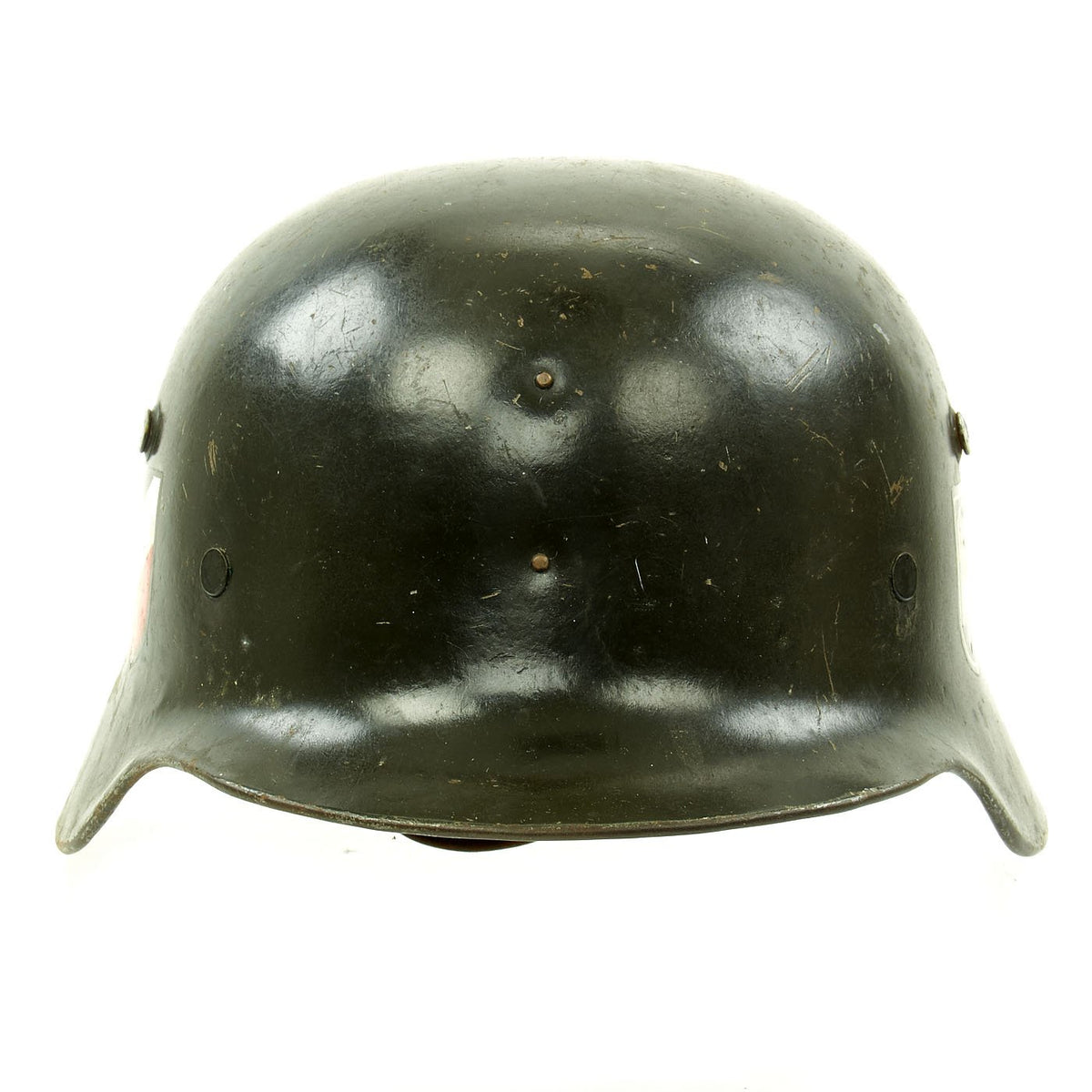Original German WWII Heer Army M35 Helmet from MGM Studios used in Garrison’s Gorillas – E.T.64 Original Items
$ 495,00 $ 148,50
Original Item: Only One Available. Well this is a very interesting piece of WWII and Television Memorabilia. This is an original example of a Model 1935 German Helmet, which was imported to the U.S. Post war, and then refitted and restored for Film and Television use at MGM Studios. We do not know how long it was in use for, but its last use was apparently on the 1967-1968 TV show Garrison’s Gorillas, as indicated by the note written on the back skirt:
TAKEN FROM MGM STUDIOS
IN APRIL 1968 BY KEOGH GLEASON.
USED IN “GARRISON’S GORILLAS”
TV SERIES.
Some quick internet research identifies Francis Keogh Gleason (April 14, 1906 – December 18, 1982) as a resident set decorator at MGM studios for over 40 years. In that time he won 4 Academy Awards (for An American in Paris in 1951, The Bad and the Beautiful in 1952, Somebody Up There Likes Me in 1956 and “Gigi” in 1958) and was nominated an additional 3 times.
The reverse, interior, neck guard apron is batch number stamped, 3122 and the interior, left side, apron has a stamped manufacturer’s code and size, E.T.64 indicating that indicating it was manufactured by Eisenhuttenwerk AG, Thale Harz, Germany in size 64. Size 64 is a nice medium size that can accommodate liners from 56cm to 57cm or US 7 to 7 1/8. Size 64 shells are harder to find and are therefore more valuable to a collector.
As far as we can tell, the paint on the helmet is not original, and only the shell is definitely WWII German. The liner is a German WWI style replacement made entirely of leather, which is held in place by 5 rivets, so two additional holes have been added. The leather chinstrap, which is broken, was installed with nuts and bolts through the riveted vent holes, and has the name LARRY G. written on it, though we cannot identify this person as a cast member, so they were probably an extra or bit player. The sides of the helmet has some very nice replica decals, though they are not quite the correct style.
A great piece of TV memorabilia, ready to add to your collection and display!
The first “modern” steel helmets were introduced by the French army in early 1915 and were shortly followed by the British army later that year. With plans on the drawing board, experimental helmets in the field, (“Gaede” helmet), and some captured French and British helmets the German army began tests for their own steel helmet at the Kummersdorf Proving Grounds in November, and in the field in December 1915. An acceptable pattern was developed and approved and production began at Eisen-und Hüttenwerke, AG Thale/Harz, (Iron and Foundry Works), in the spring of 1916.
These first modern M16 helmets evolved into the M18 helmets by the end of WWI. The M16 and M18 helmets remained in usage through-out the Weimar Reichswehr, (National Defence Force, Circa 1919-1933), era and on into the early years of the Third Reich until the development of the smaller, lighter M35 style helmet in June 1935.
The Luftwaffe pattern national eagle was originally introduced for wear by Fliegerschaft, (Pilot Base), personnel of the DLV, Deutscher Luftsportsverband, (German Air Sports Association), the clandestine, civilian, forerunner of the Luftwaffe on August 18TH 1934, and adopted for wear by the Luftwaffe on March 1ST 1935 along with the national tri-color shield for wear on the helmet.
The first pattern national eagle was utilized until a modified second pattern eagle was introduced in late 1936 or early 1937. Regulations of June 12TH 1940 discontinued the use of the national tri-color decal and further regulations of August 28TH 1943 abolished the national eagle decal and dictated that it was also to be removed from all helmets although the directives were not completely adhered to.
Fast Shipping with Professional Packaging
Thanks to our longstanding association with UPS FedEx DHL, and other major international carriers, we are able to provide a range of shipping options. Our warehouse staff is expertly trained and will wrap your products according to our exact and precise specifications. Prior to shipping, your goods will be thoroughly examined and securely secured. We ship to thousands clients each day across multiple countries. This shows how we're dedicated to be the largest retailer on the internet. Warehouses and distribution centres can be located throughout Europe as well as the USA.
Note: Orders with more than one item will be assigned a processing date depending on the item.
Before shipping before shipping, we'll conduct a thorough inspection of the items you have ordered. Today, the majority of orders will be delivered within 48 hours. The delivery time will be between 3-7 days.
Returns
The stock is dynamic and we cannot completely manage it because multiple stakeholders are involved, including our factory and warehouse. So the actual stock may alter at any time. It's possible that you may not receive your order once the order has been made.
Our policy is valid for a period of 30 days. If you don't receive the product within 30 days, we are not able to issue a refund or an exchange.
You can only return an item if it is unused and in the same state as the day you received it. You must have the item in its original packaging.
Related products
Uncategorized
Armoured Fighting Vehicles of the World: AFVs of World War One (Hardcover Book) New Made Items
Uncategorized
Uncategorized
Uncategorized
Uncategorized
Uncategorized
Uncategorized
Uncategorized
Australian WWII Owen MK1 Machine Carbine SMG Custom Fabricated Replica with Sling Original Items
Uncategorized
Uncategorized
Uncategorized
Uncategorized
Uncategorized
Uncategorized
Uncategorized
Uncategorized
Uncategorized
Uncategorized
Uncategorized
